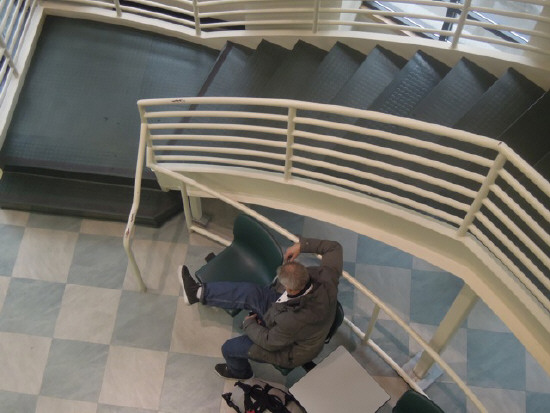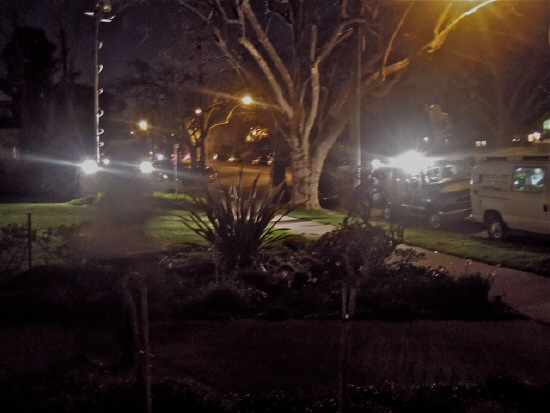by Steed Dropout
February 5, 2012
MAKING SENSE OF THE SENSELESS
Berkeley, Ca
He died in 2010, at 91, but J.D. Salinger continues to appeal — through his fiction — to alienated and mentally ill youth. “Catcher in the Rye” (’51), still read in schools that haven’t banned it, played an important role in Mark Chapman’s trial (’81) for the murder of John Lennon
Chapman, like J.D. Salinger’s Holden Caulfield, saw himself as a “catcher-in-the-rye,” saving the youth of America from plunging into the abyss of [John Lennon’s] phoniness.”
Now Berkeley — a low murder town, may have — in its second homicide of the year, another J.D. Salinger inspired killing. J.D. Salinger was a devout buddhist practitioner most of his life.
Key information is still needed to conclusively link J.D. Salinger’s influence to yet another murder.
Even if a tenuous link can be established, there remain problems of cause and effect, and a stew of fallacies, including postdictive reasoning, and a skewed sample. How many youngsters have read Salinger and not killed anyone?
Nevertheless, BR would like to make the case, that the murder in the exclusive Park Hills neighborhood, high above Berkeley’s less fortunate, can be linked to Salinger. It is not fortunate to be murdered in an exclusive neighborhood — allegedly or not.
The 67 year-old victim lived across the street from Tilden Park, a 2,079 acre “jewel” of east-bay parks. On the night of the crime (Feb. 19), he confronted his young killer who, reportedly, claimed to be a psychic looking for his fiancee, “Zoey,” when he tried to get into the victim’s mansion.
The killer was living in a flop house in Oakland, a world away from the murder mansion, skirting a nature refuge. It is not clear how he got to the crime scene, but a Berkeley bus made a stop near the crime scene at 6:53 p.m. on the night of the 9 p.m. crime.
The killer’s imaginary fiancee, (or was it fiance?) Zoey, (a possible police misspelling) of Zooey) could be from J.D. Salinger’s two long New Yorker stories (’61) “Franny and Zooey.” In these stories, later published together as a novel to cash in on the success of “Catcher in the Rye” Franny has a nervous breakdown (Part 1); and Zooey (part 2), talks her down.
The young man, who allegedly bludgeoned to death his victim with a ceramic planter, made-up the Zooey character, said his parents. “She doesn’t exist,” they say.
But J.D. Salinger invented Zooey, as an angel of mercy. Zooey might have been able to help the alleged killer, and that killer might have seen Zoey as his guardian angel.
Berkeley police give the name as Zoey, but several on-line sources say Zooey is a variant spelling. Zoey is usually a girl’s name, but in J.D. Salinger, Zooey was the man, Franny the woman. The alleged killer could have been confused, or mis-read. That is, if he even had read Salinger.
J.D. SALINGER NOT NEW TO ROMANTIC VIEW OF YOUTH
In life, J.D. Salinger was hounded by journalists and lit wits, who noticed that he romanticized most of his youthful characters, perhaps to the point of unhealthy idealization.
Some reading this, will dispute imputing a real-life role of any kind to a literary invention. For this type of literalist, there is no answer except a long list of characters going back to the Bible, or the Greeks. What about Rhett Butler, or Rick Blaine?
Records show that the alleged killer was repeatedly failed by the mental health system, which released him from a treatment center over the objections of his doctor, even though the young man’s past violent behavior showed the youth was dangerous.
Zooey, an apparition, was the only hope the unfortunate young man had, and the murder victim apparently got in the way at a dangerous time.
The victim called Berkeley police to report a prowler, but a nearby police squad car was diverted.
Berkeley police blames local Occupy movements for the killing. If it hadn’t been for an Occupy “Fuck the Police,” march, [which sounded more threatening than it turned out to be], police might have responded, according to a police spokesman.
Once the incident was called in as an assault (second call), police responded in great force in seven minutes, catching the near-by alleged killer in 20 minutes.
By then it was too late.
Berkeley Police said they needed to hold officers in reserve in case the potentially violent Occupy march erupted. It didn’t.
A developing controversy over whether Berkeley police acted in the best interest of Berkeley’s wealthy hills dwellers has led to fevered complaints, and a public hearing into the matter will be held this week.
But here at Berkeley Reporter, we prefer the J.D. Salinger angle.
A tall tale, or is BR on to something, in its attempt to understand crime, not just report it? When we can confirm the J.D. Salinger angle, we’ll let you know.


